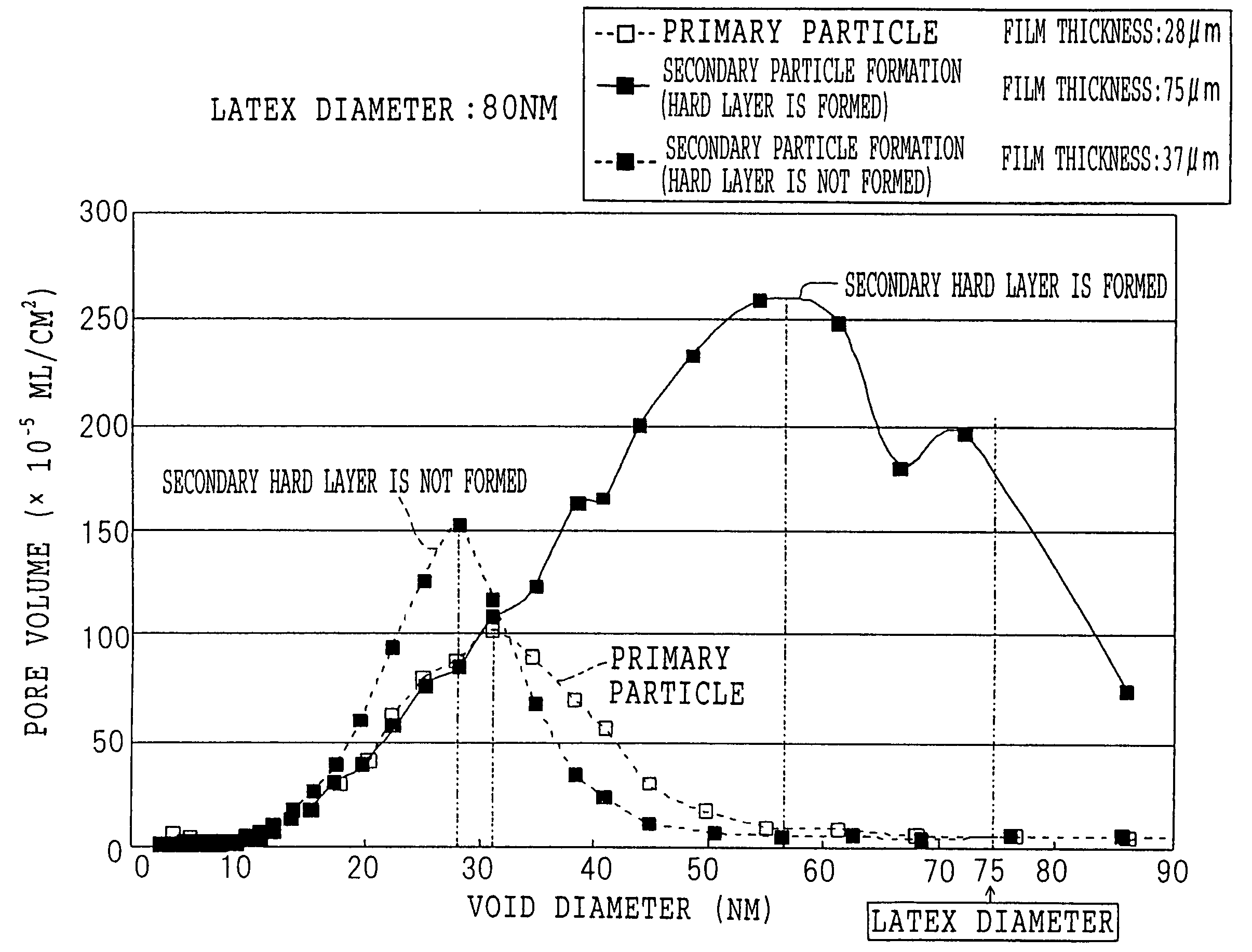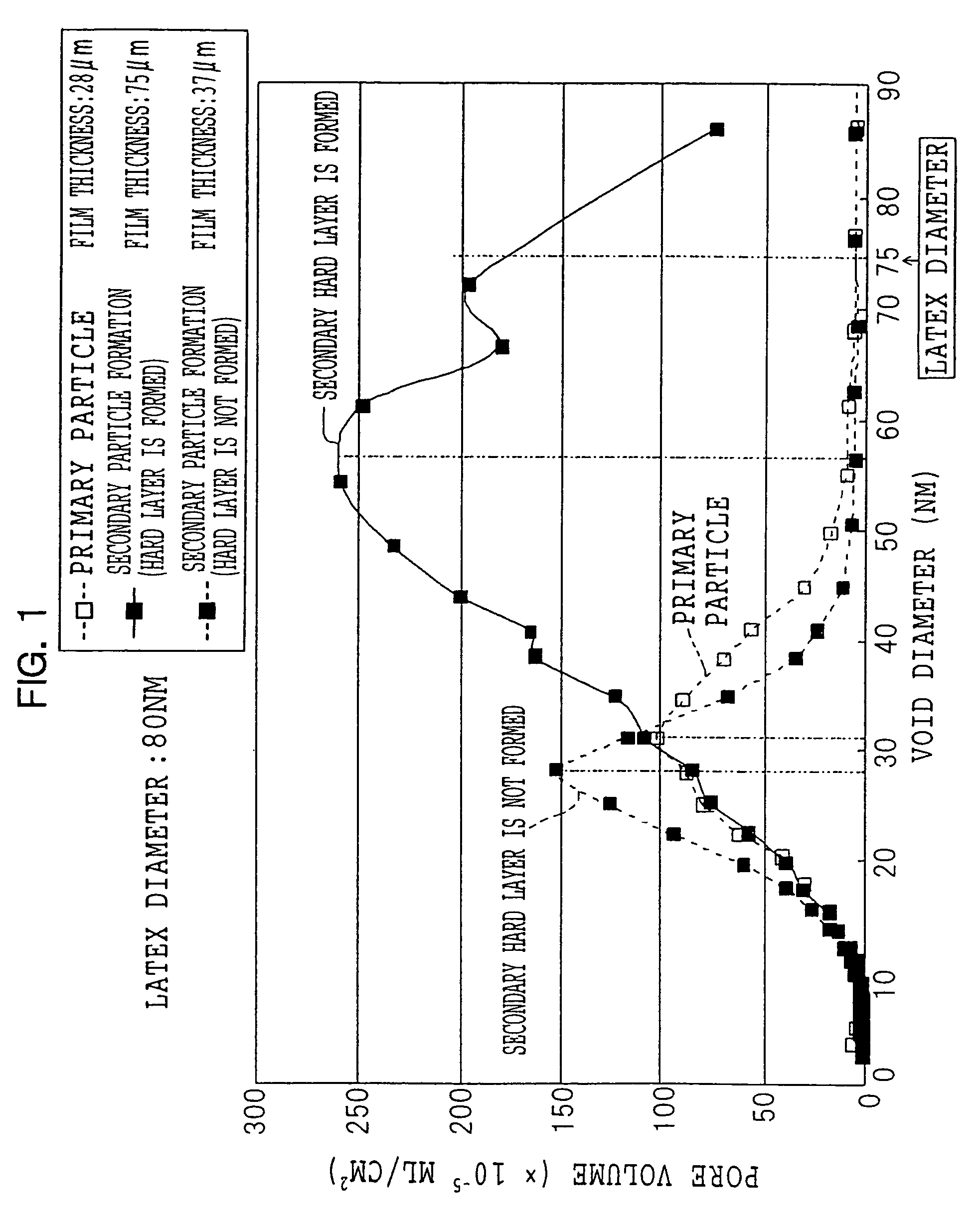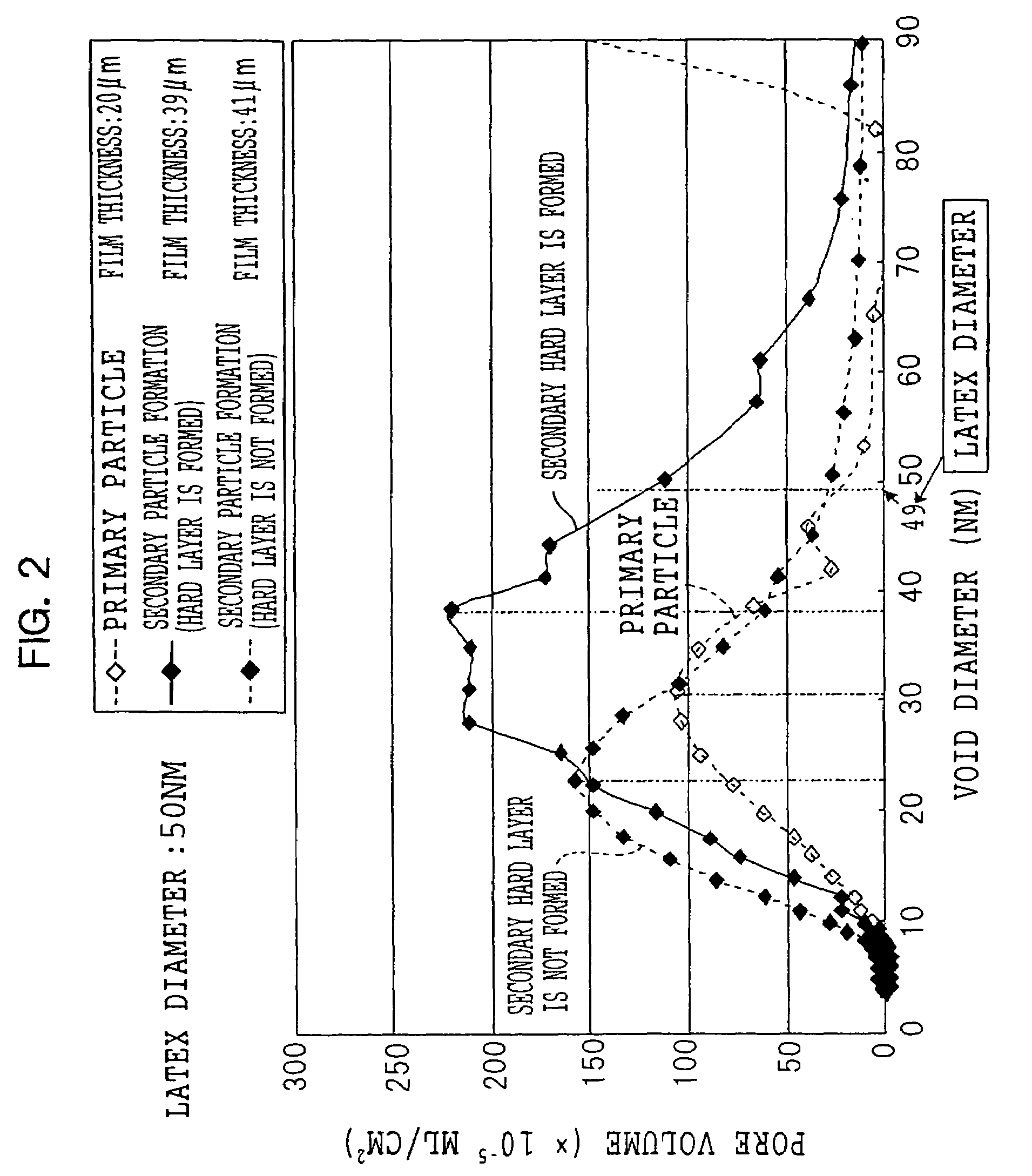Ink jet recording medium
- Summary
- Abstract
- Description
- Claims
- Application Information
AI Technical Summary
Benefits of technology
Problems solved by technology
Method used
Image
Examples
production example 1
Preparation of Colored Fine Particle Dispersion (D-1)
[0579]A mixed solution was prepared composed of 10 parts of an auxiliary solvent (ethyl acetate), 0.6 parts of a hydrophobic dye of the following structural formula (a) and 1.8 parts of a hydrophobic polymer (n-butyl acrylate / methyl methacrylate (50 / 50) copolymer). Separately, a mixed solution was prepared composed of 15 parts of water and 0.3 parts of sodium di(2-ethylhexyl)sulfosuccinate. The two mixed solutions were combined, and emulsion-dispersed using a homogenizer, then, ethyl acetate was removed, to obtain a colored fine particle dispersion having a solid content of 17.5%. The particle size of the colored fine particles in this colored fine particle dispersion was measure by a particle size distribution measuring apparatus, “LB-500” (trade name), manufactured by Horiba Ltd., to find a volume-average particle size of 85 nm. Hereinafter, this is abbreviated as the colored fine particle dispersion (D-1).
[0580]
(Preparation of ...
production examples 2 to 4
Preparation of Colored Fine Particle Dispersions (D-2 to D-4)
[0583]Colored fine particle dispersions (D-2 to D-4) were prepared in the same manner as in Production Example 1 except that the following hydrophobic dyes (b) to (d) were used instead of the hydrophobic dye (a) in Production Example 1.
[0584]
(Preparation of Ink Compositions 02 to 04)
[0585]Aqueous ink jet recording ink compositions (02 to 04) were prepared in the same manner as for the ink composition (01) except that the colored fine particle dispersions (D-2 to D-4) were used instead of the colored fine particle dispersion (D-1) in the preparation of the ink composition (01).
synthetic example 1
Production of Polymer Fine Particles (1)
[0586]To 160 parts of ion exchange water was added 0.6 parts of sodium dodecylsulfate, 27 parts of methyl methacrylate and 3 parts of divinylbenzene, and the mixture was heated while the mixture was stirred under nitrogen gas flow at a temperature 70° C. To this was added an initiator solution prepared by dissolving 0.40 parts of potassium peroxydisulfate in 10 parts of ion exchange water. Further, they were reacted at a temperature of 70° C. for 2 hours while stirring the mixture under a nitrogen gas flow, to obtain a 15.0% suspension of polymer fine particles (1). The resulted polymer fine particles (1) had an average particle size of 49 nm.
PUM
| Property | Measurement | Unit |
|---|---|---|
| Length | aaaaa | aaaaa |
| Fraction | aaaaa | aaaaa |
| Fraction | aaaaa | aaaaa |
Abstract
Description
Claims
Application Information
 Login to View More
Login to View More - R&D
- Intellectual Property
- Life Sciences
- Materials
- Tech Scout
- Unparalleled Data Quality
- Higher Quality Content
- 60% Fewer Hallucinations
Browse by: Latest US Patents, China's latest patents, Technical Efficacy Thesaurus, Application Domain, Technology Topic, Popular Technical Reports.
© 2025 PatSnap. All rights reserved.Legal|Privacy policy|Modern Slavery Act Transparency Statement|Sitemap|About US| Contact US: help@patsnap.com



